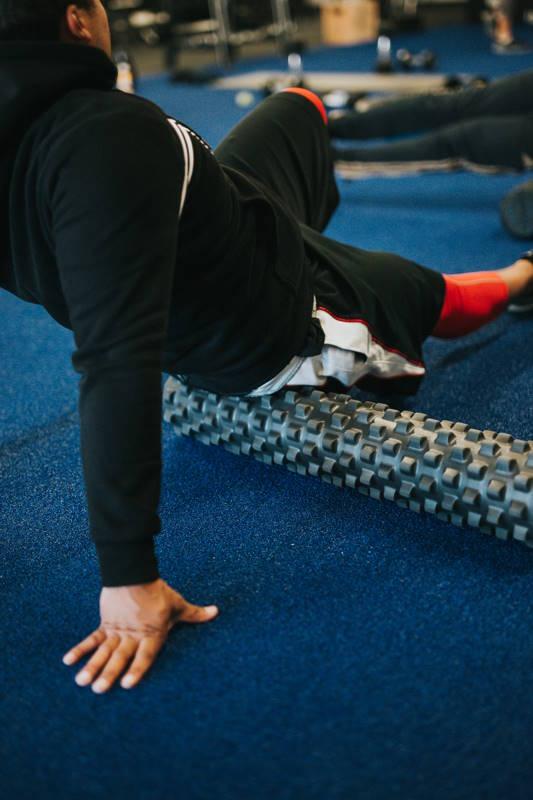Running is an excellent form of exercise that offers numerous health benefits. It helps in maintaining a healthy weight, improving cardiovascular health, reducing stress, and improving overall fitness. However, running can also cause soreness, stiffness, and muscle imbalances in the body. This is where foam rolling comes in handy. Foam rolling is a self-myofascial release technique that can help runners reduce muscle soreness and improve flexibility. In this blog post, we will discuss why foam rolling is helpful to runners.
What is Foam Rolling?
Foam rolling is a self-massage technique that involves using a foam roller to apply pressure to sore or tight muscles. The foam roller is a cylindrical tool made of dense foam that varies in density and size. Foam rolling is designed to release tension and tightness in the muscles, improve flexibility, increase blood flow, and reduce soreness.
How Does Foam Rolling Work?
When we exercise, our muscles contract and relax, which can cause knots and trigger points in the muscle tissue. These knots and trigger points can lead to soreness, stiffness, and decreased range of motion. Foam rolling works by applying pressure to these knots and trigger points, which helps to release tension in the muscle tissue. Foam rolling also increases blood flow to the muscles, which can help to speed up the recovery process.
Benefits of Foam Rolling for Runners
- Reduces Muscle Soreness
One of the primary benefits of foam rolling for runners is that it can help to reduce muscle soreness. Running puts a lot of stress on the muscles, and this can cause soreness and stiffness. Foam rolling can help to alleviate this soreness by releasing tension in the muscles and increasing blood flow.
A study published in the Journal of Athletic Training found that foam rolling after a workout can help to reduce muscle soreness and improve range of motion. The study found that foam rolling was more effective than static stretching in reducing muscle soreness.
- Improves Flexibility
Flexibility is essential for runners as it can help to improve running performance and reduce the risk of injury. Foam rolling can help to improve flexibility by releasing tension in the muscles and improving range of motion.
A study published in the International Journal of Sports Physical Therapy found that foam rolling can significantly increase flexibility in the hamstrings. The study found that participants who foam rolled their hamstrings had a significant increase in flexibility compared to those who did not foam roll.
- Increases Range of Motion
Range of motion is the degree to which a joint can move through its full range of motion. Improving range of motion is essential for runners as it can help to improve running performance and reduce the risk of injury. Foam rolling can help to increase range of motion by releasing tension in the muscles and improving flexibility.
A study published in the Journal of Strength and Conditioning Research found that foam rolling can significantly increase range of motion in the hip flexors. The study found that participants who foam rolled their hip flexors had a significant increase in range of motion compared to those who did not foam roll.
- Improves Blood Flow
Foam rolling can help to improve blood flow to the muscles, which can help to speed up the recovery process. When we exercise, our muscles produce waste products such as lactic acid, which can cause muscle soreness and fatigue. Foam rolling can help to flush out these waste products and increase blood flow to the muscles.
A study published in the Journal of Sports Rehabilitation found that foam rolling can help to increase blood flow to the muscles. The study found that participants who foam rolled their quadriceps had a significant increase in blood flow compared to those who did not foam roll.
- Reduces the Risk of Injury
Foam rolling can help to reduce the risk of injury by improving flexibility, range of motion, and reducing muscle soreness. By releasing
tension in the muscles, foam rolling can help to prevent muscle imbalances, which can lead to injury. Muscle imbalances occur when some muscles become stronger and tighter than others, causing an uneven distribution of forces in the body. This can lead to compensations, which can increase the risk of injury.
A study published in the International Journal of Sports Physical Therapy found that foam rolling can help to reduce the risk of injury. The study found that participants who foam rolled their quadriceps had a significant reduction in knee pain compared to those who did not foam roll. Knee pain is a common injury among runners, and foam rolling can help to prevent it by reducing muscle tension in the quadriceps.
- Enhances Recovery
Recovery is essential for runners as it allows the body to repair and rebuild muscle tissue after exercise. Foam rolling can help to enhance recovery by improving blood flow to the muscles and reducing muscle soreness. When we exercise, our muscles produce waste products such as lactic acid, which can cause muscle soreness and fatigue. Foam rolling can help to flush out these waste products and increase blood flow to the muscles, which can speed up the recovery process.
A study published in the Journal of Athletic Training found that foam rolling can help to enhance recovery after exercise. The study found that foam rolling after a workout can help to reduce muscle soreness and improve range of motion, which can help to enhance recovery.
Tips for Foam Rolling for Runners
Foam rolling is a safe and effective way to reduce muscle soreness and improve flexibility, but it is essential to use proper technique to avoid injury. Here are some tips for foam rolling for runners:
-
Start Slowly: If you are new to foam rolling, start slowly and gradually increase the intensity and duration of your foam rolling sessions.
-
Use Proper Technique: Use proper technique when foam rolling to avoid injury. Roll slowly and avoid rolling over bony areas or joints.
-
Target Problem Areas: Focus on targeting problem areas, such as tight muscles or areas of soreness.
-
Roll Before and After Exercise: Foam roll before and after exercise to help prevent injury and enhance recovery.
-
Stay Hydrated: Drink plenty of water before and after foam rolling to help flush out waste products and improve blood flow.
Conclusion
Foam rolling is a safe and effective way to reduce muscle soreness, improve flexibility, increase range of motion, improve blood flow, reduce the risk of injury, and enhance recovery for runners. By incorporating foam rolling into your running routine, you can help to prevent muscle imbalances, reduce muscle soreness, and improve performance. Remember to start slowly, use proper technique, target problem areas, roll before and after exercise, and stay hydrated to maximize the benefits of foam rolling.

